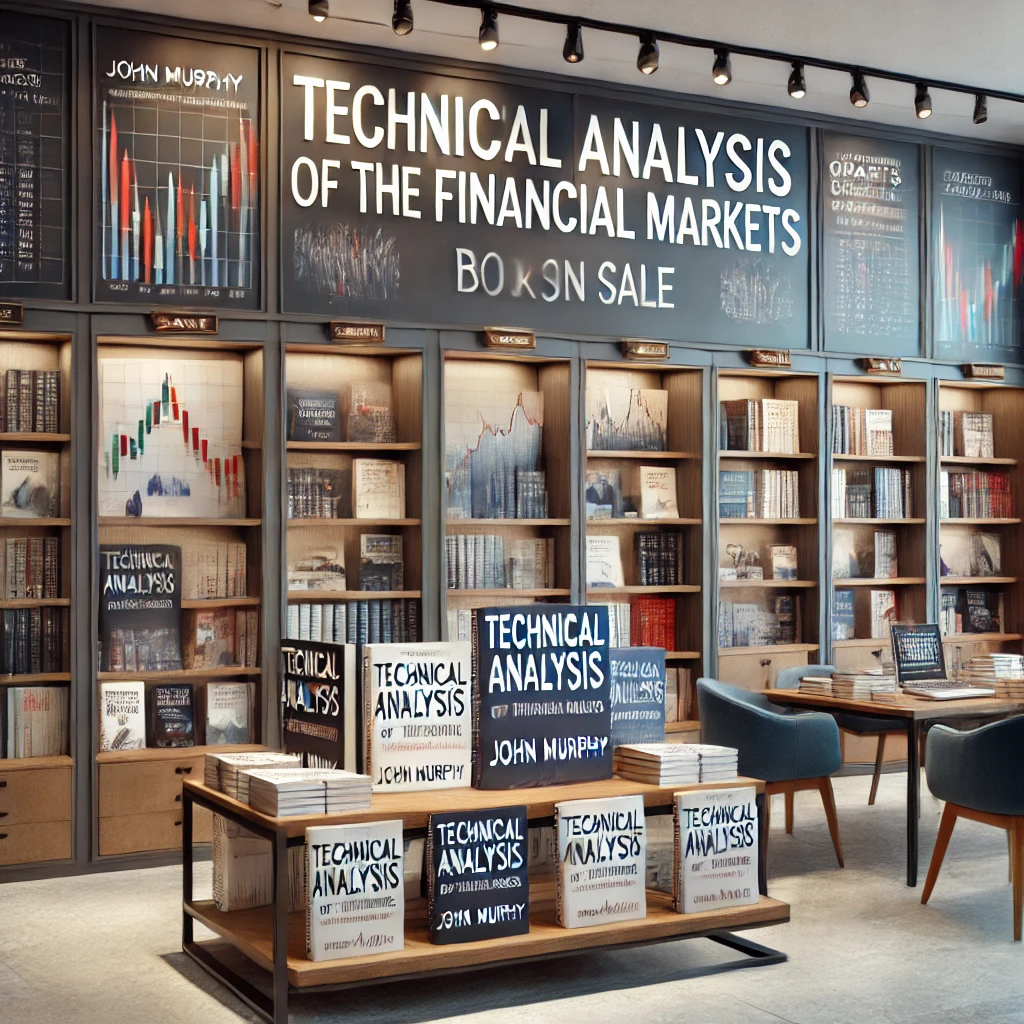When discussing the Technical Analysis of the Financial Markets, we refer to a key resource for understanding how financial markets function through the lens of price patterns, trends, and indicators. This method of analysis primarily focuses on market data, such as price movements, volumes, and chart patterns, to make trading decisions. Various books provide a detailed foundation on this subject, offering insights into practical strategies, theoretical principles, and tools for successful trading. Below is an overview of some prominent books on Technical Analysis of the Financial Markets, their key content, and why they are crucial for traders.
1. “Technical Analysis of the Financial Markets” by John J. Murphy
John J. Murphy’s book is one of the most respected and comprehensive guides on technical analysis. It is often considered the “bible” of technical analysis for traders and market analysts. The book is ideal for both beginners and seasoned professionals, offering insights into chart patterns, trend analysis, moving averages, oscillators, and much more.
Key Features:
- Detailed explanations of charting techniques: Murphy covers bar charts, candlestick patterns, point and figure charts, and more.
- In-depth understanding of trends: Learn about trend lines, channels, and how to interpret them in real trading scenarios.
- Technical indicators: The book provides a thorough discussion on moving averages, momentum indicators like the RSI (Relative Strength Index), and oscillators.
- Risk management techniques: Guidance on stop-loss orders, position sizing, and capital management.
Murphy also includes real-life examples and a section dedicated to intermarket analysis, showing how different financial markets influence each other. The book is indispensable for anyone looking to grasp the core principles of technical analysis in an easy-to-follow format.
2. “Technical Analysis Explained” by Martin J. Pring
Martin J. Pring’s book is another popular title that offers a deep dive into the psychological aspects of technical analysis. Pring emphasizes that technical analysis is not just about charts and data, but also about understanding market sentiment and trader behavior.

Key Features:
- Cycle analysis: Pring dedicates a portion of the book to understanding market cycles and how to recognize them early.
- Technical indicators: In-depth coverage of indicators such as MACD (Moving Average Convergence Divergence), stochastic oscillators, and others.
- Psychology of trading: He explains the emotional aspects of trading, like fear and greed, and how they impact price movements.
- Practical strategies to use in various market conditions, whether trending or sideways markets.
Pring’s book is often recommended for intermediate traders who are already familiar with basic chart patterns and want to take their skills to the next level.
3. “The New Trading for a Living” by Dr. Alexander Elder
Dr. Alexander Elder’s book, “The New Trading for a Living,” is a comprehensive guide not only on technical analysis but also on trading psychology and risk management. Elder is a seasoned trader who focuses on helping individuals build trading discipline and strategies for consistent success.
Key Features:
- Triple screen trading system: Elder’s famous trading system uses multiple time frames to confirm trades, adding another layer of precision to technical analysis.
- Psychological aspects: Elder dives deep into the mental challenges traders face, offering tips on how to avoid common psychological pitfalls.
- Risk management: Comprehensive guidance on capital management, including position sizing and stop-loss strategies.
This book is more than just about technical analysis; it’s about understanding the mindset required to be a successful trader, making it ideal for those who want a holistic approach to trading.
4. “Japanese Candlestick Charting Techniques” by Steve Nison
Steve Nison’s book is credited with popularizing candlestick charting in the West. Candlestick charts are an essential tool in technical analysis, providing traders with visually intuitive insights into market sentiment and price action.
Key Features:
- Introduction to candlestick patterns: The book explains key patterns like doji, hammers, engulfing patterns, and others.
- Combining candlesticks with other tools: Nison also discusses how to use candlesticks in conjunction with Western technical analysis tools like moving averages and oscillators.
- Practical examples: Numerous case studies show how candlestick patterns can be used in real trading scenarios.
This book is a must-read for traders interested in mastering one of the most visual and effective tools in technical analysis.
5. “A Complete Guide to Volume Price Analysis” by Anna Coulling
Volume is a crucial yet often overlooked aspect of technical analysis. Anna Coulling’s book offers a thorough examination of how price and volume interact in the market, providing a clear understanding of how to interpret volume in conjunction with price action.
Key Features:
- Volume analysis: Detailed instructions on how to read volume in relation to price and use it to confirm trends or predict reversals.
- Price action strategies: Coulling focuses on simple, actionable strategies that involve reading price bars and understanding their relationship with volume.
- Case studies: The book offers real-life examples to demonstrate how volume price analysis works in live markets.
For traders looking to gain a competitive edge by understanding market participation and validating price movements with volume, this book is highly recommended.
6. “Technical Analysis Using Multiple Timeframes” by Brian Shannon
Brian Shannon’s book is a more specialized guide that focuses on using multiple timeframes to enhance the accuracy of your analysis. This technique helps traders filter out noise and make better-informed decisions. other books – the lsat trainer / cognitive behavioral therapy
Key Features:
- Timeframe analysis: Shannon explains how to analyze price action over different time frames to make more accurate predictions.
- Trend alignment: Learn how to align trends across timeframes to identify high-probability trade setups.
- Practical examples: The book includes case studies showing how to use multiple timeframes in practice.
This book is excellent for traders who want to take their technical analysis to the next level by incorporating advanced strategies.
Conclusion
The Technical Analysis of Financial Markets is a vast and complex field, but the right resources can help traders at any level improve their skills. From John J. Murphy’s foundational guide to Steve Nison’s candlestick techniques and Anna Coulling’s insights on volume, these books provide a comprehensive understanding of the tools and strategies that define technical analysis. Each book offers a unique perspective, covering both the technical and psychological aspects of trading, making them essential for anyone serious about succeeding in the financial markets.
Whether you’re a beginner or an experienced trader, these books will provide valuable insights and strategies that can be applied across different market conditions, helping you become more proficient in the art of technical analysis.

